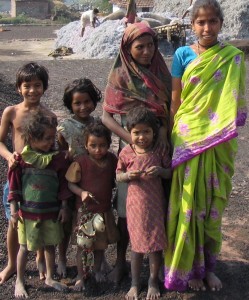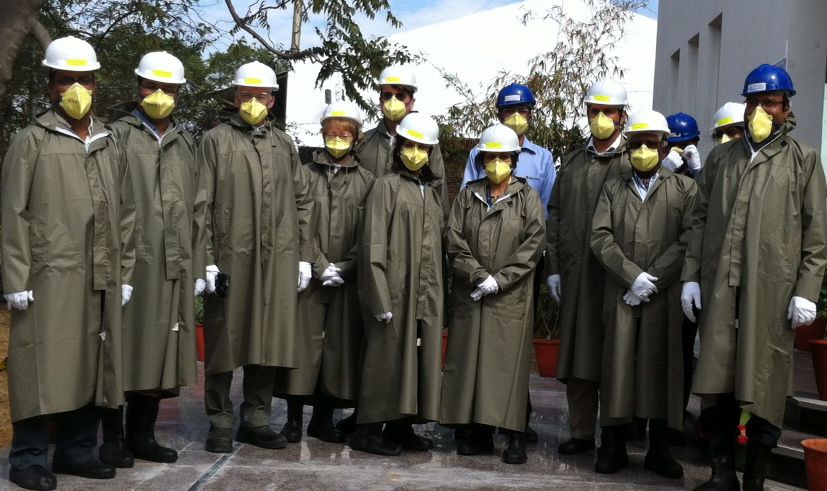 Sarita Gupta, Blacksmith’s India director, contributes this post from India.
Sarita Gupta, Blacksmith’s India director, contributes this post from India.
The fabled land of Rajasthan is known, among other things, for its vividly colored clothing. So when the opportunity came to travel for work to Jaipur, I could see myself swathed in layers of gossamer cotton in eye-popping blues, magentas, reds.
Instead, here is what we wore. 
That’s because we are visiting a lead processing and recycling factory on the outskirts of Jaipur.
Without lead, things requiring batteries, including our cars, trucks and generators, would not run. But as I have learned from my work with the Blacksmith Institute, lead is also one of the most toxic elements on earth. The only way to live with lead is to make sure it is handled in an environmentally sound manner, from ore to manufacturing to storage, disposal and recycling.
Good Guys vs. Bad Guys
Blacksmith in India is trying to reduce the risk of lead contamination by working with the industry, which has good guys who follow the rules, and bad guys who don’t mind smelting a few batteries in their backyard furnace and dumping acid, lead residue and other nasty stuff right into the ground.
The trouble is, the proportion of good vs. bad guys in India is about 50-50, which results in millions of people with compromised health.
Brian Wilson, program manager at the International Lead Management Centre, accompanied us on the visit to the factory owned by Gravita, one of the good guys.
Brian has worked around lead for 33 years and takes personal protection very seriously. Here’s the email he sent the rest of us just before the trip:
“When visiting the plant, please wear flat sturdy shoes and jeans or slacks that completely cover your legs – and a long sleeve cotton or synthetic top, but not a sweater”.
We get in the Toyota minivan for the 40 km ride to the factory. Brian looks down at my shoes—flat, sturdy, just as requested.
“We really should stop in the market and get you proper shoes,” he frowns.
I look at him quizzically. My shoes were made of breathable fabric and had air holes, which would let in lead dust.
“As soon as you get back, wash not just your feet but the shoes too.”
Sweater and Hair: Toxic Lead Traps
Gravita is ready for us with helmets, masks, gloves and newly-bought just-for-us rubber boots and plastic overcoats.
We troop onto the factory floor. The place is spanking clean, which makes it hard to believe that nasty things are lurking in the air and on surfaces to hurt us badly.
The boots don’t fit right, the plastic feels clammy and I fight the urge to tear off the mask. I wonder how the workers manage all day long and especially in the searing hot summer days. (Their only concession is that instead of plastic they wear cotton uniforms which they must remove at the end of their shift). Again, this is in a place that is looking out for their welfare. Thousands toil in dangerous conditions with no or limited personal protective equipment.
Meanwhile Brian has spotted a worker with a sweater on (February mornings are chilly in the desert air) and marches him outside to remove it. Why? Because lead dust gets trapped in wool and the worker will wear the sweater home, thereby risking that his family will come into contact with the toxin as well.
We finish the tour by walking through a shallow pan of water and then scraping our boots on a perforated mat. It is a relief to take off my new Rajasthani wear. But Brian is not finished with me yet.
“Sarita, you must take a long shower and make sure you wash your hair too.”
My hair? I had just had it cut and blow dried before leaving for India and wasn’t planning on washing it for a couple more days. But enough of it peeked out from under the helmet to become a dust catcher and get Brian concerned. I have half a mind to ignore him. But then I think of the effects of lead poisoning–abdominal pain, tiredness, decreased sleep and appetite, and this just for starters–and get myself to the shower.
Related: Report from India – lead Battery Recycling the Right and Wrong Way





